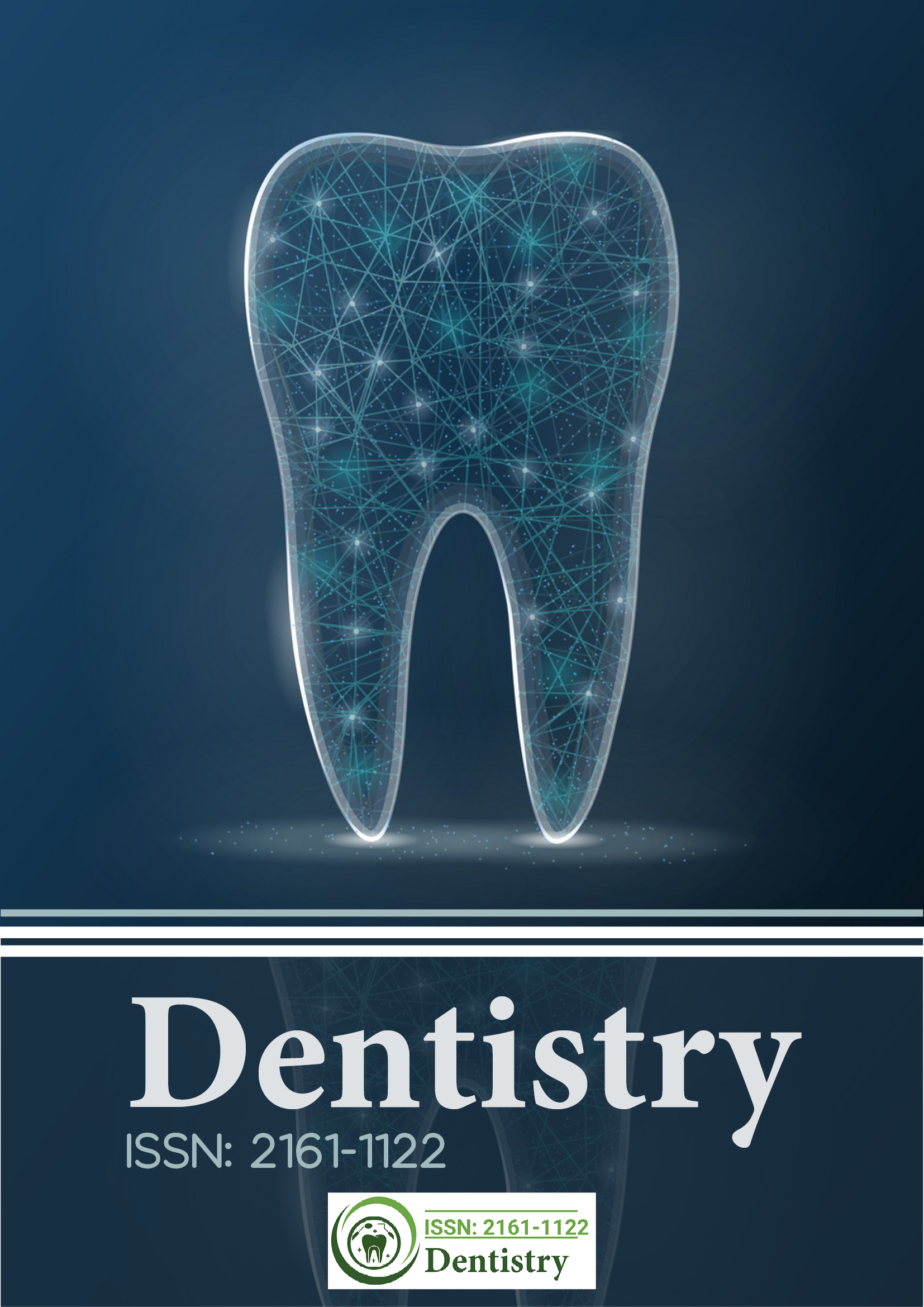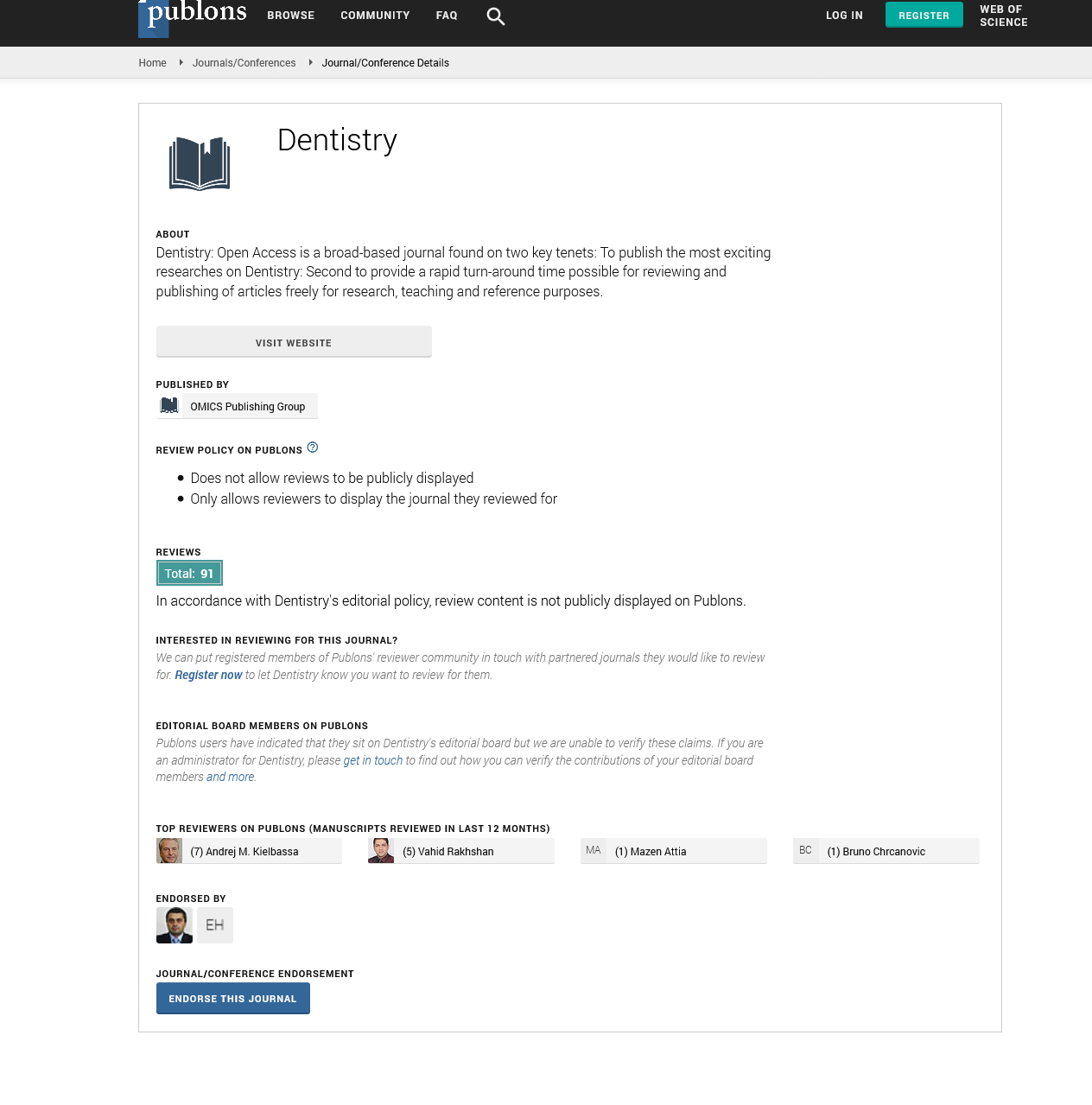Citations : 2345
Dentistry received 2345 citations as per Google Scholar report
Indexed In
- Genamics JournalSeek
- JournalTOCs
- CiteFactor
- Ulrich's Periodicals Directory
- RefSeek
- Hamdard University
- EBSCO A-Z
- Directory of Abstract Indexing for Journals
- OCLC- WorldCat
- Publons
- Geneva Foundation for Medical Education and Research
- Euro Pub
- Google Scholar
Useful Links
Share This Page
Journal Flyer

Open Access Journals
- Agri and Aquaculture
- Biochemistry
- Bioinformatics & Systems Biology
- Business & Management
- Chemistry
- Clinical Sciences
- Engineering
- Food & Nutrition
- General Science
- Genetics & Molecular Biology
- Immunology & Microbiology
- Medical Sciences
- Neuroscience & Psychology
- Nursing & Health Care
- Pharmaceutical Sciences
CBCT utilization for assessment of the potential risk following implant placement in fresh extraction sites of the posterior mandible
23rd International Conference on Dentistry and Dental Materials
July 19-20, 2018 | Rome, Italy
Bahaa Haj Yahya
Rabin Medical Center, Israel
Posters & Accepted Abstracts: Dentistry
Abstract:
Background: Immediate implant placement (IIP) is a reliable procedure with 93.9% to 100% survival rate. Purpose: The purpose of this study is to assess the risks of performing IIP in the posterior mandible. Materials & Methods: 100 pre-extraction cone beam computed tomography (CBCT) scans were analyzed. The main outcome parameters were the distance from tooth apices to the mandibular canal and lingual plate. Results: 48% of second premolar, 32% of first molar and 64% of second molar had <6 mm of bone available for IIP and were thus considered a high risk for Inferior Alveolar Nerve (IAN) injury. The mean root to alveolar canal (RAC) of first mandibular molar was the highest (7.56±2.71mm), second molar (5.44±2.95mm) was the lowest. The difference of the mean RAC distance in each tooth type was statistically significant (p<0.005). In females, nonsmokers and patients under 40 years, lower mean RAC and higher risk was noted for IIP for all teeth included in the present study. Conclusions: Placing an immediate implant may present a high risk for IAN injury and lingual plate perforation with no regard to the specific root or the different side of the mouth. Among the examined teeth, the second molar posses the highest risk.

